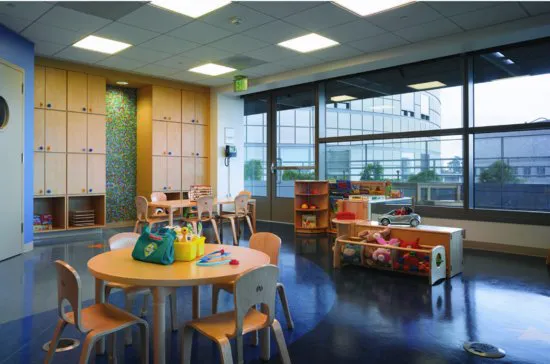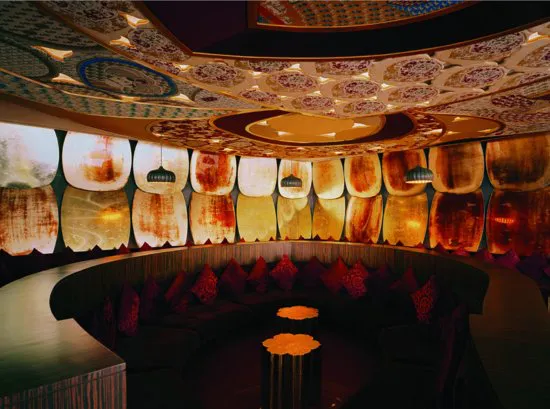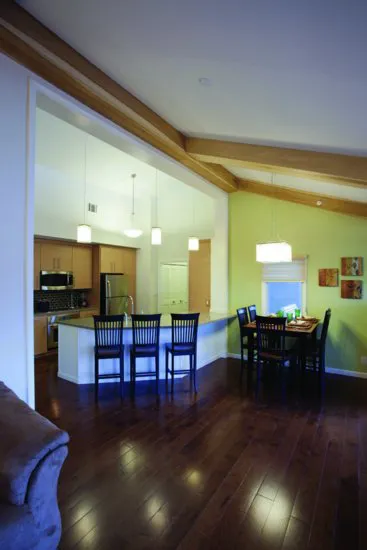
eBook - ePub
Designing Interiors
Rosemary Kilmer, W. Otie Kilmer
This is a test
Buch teilen
- English
- ePUB (handyfreundlich)
- Über iOS und Android verfügbar
eBook - ePub
Designing Interiors
Rosemary Kilmer, W. Otie Kilmer
Angaben zum Buch
Buchvorschau
Inhaltsverzeichnis
Quellenangaben
Über dieses Buch
After its publication in 1992, Designing Interiors became a hugely successful reference tool and designing textbook. In Designing Interiors, Second Edition, updates on trends in sustainability and green design, building codes, universal design, and building information models amplify the already invaluable interior design tricks of trade. Design professors Rosemary and Otie Kilmer provide a fuller design history that incorporates non-Western design and dynamic color illustrations that flesh out technical concepts.
Häufig gestellte Fragen
Wie kann ich mein Abo kündigen?
Gehe einfach zum Kontobereich in den Einstellungen und klicke auf „Abo kündigen“ – ganz einfach. Nachdem du gekündigt hast, bleibt deine Mitgliedschaft für den verbleibenden Abozeitraum, den du bereits bezahlt hast, aktiv. Mehr Informationen hier.
(Wie) Kann ich Bücher herunterladen?
Derzeit stehen all unsere auf Mobilgeräte reagierenden ePub-Bücher zum Download über die App zur Verfügung. Die meisten unserer PDFs stehen ebenfalls zum Download bereit; wir arbeiten daran, auch die übrigen PDFs zum Download anzubieten, bei denen dies aktuell noch nicht möglich ist. Weitere Informationen hier.
Welcher Unterschied besteht bei den Preisen zwischen den Aboplänen?
Mit beiden Aboplänen erhältst du vollen Zugang zur Bibliothek und allen Funktionen von Perlego. Die einzigen Unterschiede bestehen im Preis und dem Abozeitraum: Mit dem Jahresabo sparst du auf 12 Monate gerechnet im Vergleich zum Monatsabo rund 30 %.
Was ist Perlego?
Wir sind ein Online-Abodienst für Lehrbücher, bei dem du für weniger als den Preis eines einzelnen Buches pro Monat Zugang zu einer ganzen Online-Bibliothek erhältst. Mit über 1 Million Büchern zu über 1.000 verschiedenen Themen haben wir bestimmt alles, was du brauchst! Weitere Informationen hier.
Unterstützt Perlego Text-zu-Sprache?
Achte auf das Symbol zum Vorlesen in deinem nächsten Buch, um zu sehen, ob du es dir auch anhören kannst. Bei diesem Tool wird dir Text laut vorgelesen, wobei der Text beim Vorlesen auch grafisch hervorgehoben wird. Du kannst das Vorlesen jederzeit anhalten, beschleunigen und verlangsamen. Weitere Informationen hier.
Ist Designing Interiors als Online-PDF/ePub verfügbar?
Ja, du hast Zugang zu Designing Interiors von Rosemary Kilmer, W. Otie Kilmer im PDF- und/oder ePub-Format sowie zu anderen beliebten Büchern aus Architecture & Interior Design. Aus unserem Katalog stehen dir über 1 Million Bücher zur Verfügung.
Information
PART ONE
THE HISTORICAL AND THEORETICAL BASES OF DESIGN
1
Interior Design, an Introduction
Interior design is one of the most exciting and creative professions. A combination of art, science, and technology, interior design, in practice, manipulates space, form, texture, color, and light to enhance the quality of human life. This book is about interior spaces and their design and about interior design as a profession. The practice of actively designing interior space is a major commitment by those who enter the field, that is, people who work toward improving our built environments.
We spend an increasing amount of our lives indoors in built environments. We wake from a night’s sleep in some form of interior space and go to learn, work, or play in another space that gives a sense of purpose to our lives. We may briefly go outdoors to get to the site of our day’s occupation, but the amount of time spent outdoors is usually only a fraction of the time spent indoors.
Why should we be concerned about the design of interiors? Well-designed spaces can contribute substantially to our sense of well-being, not just serve as shelters. They can be positive influences on our socialization, learning, and general appreciation of life. People’s behavior can be positively or negatively reinforced by interaction with environmental forces.
The task of those who design our interior spaces becomes increasingly important as more people spend greater amounts of time indoors. Designers must devise spaces that serve the basic needs of the users and at the same time create positive and uplifting effects. Properly designed environments are efficient and harmonious (Figure 1.1). They can have a pervasive positive influence, which interiors that are not carefully designed may not have.

Figure 1.1 This Haworth showroom, in San Francisco, is an excellent example of a well-designed interior that serves the needs of the users and creates a positive and uplifting effect.
Courtesy of Perkins + Will; Photo Courtesy of Haworth, Inc.; Nick Merrick © Hedrich Blessing
CURRENT ISSUES IN DESIGN
Interior design is a dynamic profession that changes over time as the result of technological advances, research, codes, culture, and environmental factors. Some of the current issues facing interior designers include universal design, globalization, and sustainable design.
Universal Design
Universal design is a concept that encompasses the design of worldwide environments, spaces, objects, and communication with the intent of serving the widest range of users, regardless of age and physical abilities. Universal design can include accessible design, which specifically focuses on people with disabilities and their right of access to entities. However, the two terms should not be used interchangeably. Universal design is involved with more than providing minimal compliance with specific accessibility requirements and guidelines. It seeks to integrate accessible features into the design of the building, interiors, and objects. It addresses the usability issues of spaces and equipment, instead of merely setting standards and minimum requirements, which accessible design does. See Chapter 10 for more detailed information on accessibility. Interior designers are also involved with designing for special populations, which include people of all abilities and ages, including children, the elderly, and those with temporary or permanent special needs (Figure 1.2).

Figure 1.2 Mattel Children’s Hospital UCLA is designed to serve the needs of its special population.
Courtesy of Perkins + Will; © fotoworks/Benny Chan
Globalization
Interior designers often work on a global scale and with multicultural communities and people. This is particularly true today as the Internet and other digital media allow designers and others to communicate worldwide. Designers may encompass a multitude of nationalities, cultural traits, physical needs, and preferences. The use of space and the meaning of color may vary among different cultures, regions, and countries. Materials indigenous to a region may also affect how environments are built. Therefore, designers must be aware of particular cultural beliefs and preferences in order to propose appropriate design solutions for a global market (Figure 1.3).

Figure 1.3 The Park Hotel in Hyderabad, India, infuses a modern, sustainable design with the local craft traditions, and is influenced by the region’s reputation as a center for the design and production of gemstones and textiles.
© Skidmore, Owings & Merrill LLP | © Robert Polidori
Sustainable Design
Sustainable design seeks to reduce the negative impacts on our environments, eliminate nonrenewable resources, and promote the interaction of people and the natural environment. The need for sustainable design is a direct result of global growth in human population, economic activity, damage to the earth’s ecosystem, and depletion of natural resources. Sustainability principles include energy conservation and efficiency, recycled or sustainably produced materials, improved indoor environmental quality (such as air), and requiring performance standards for the quality and durability of products that last longer—reducing or eliminating their replacement cycles (Figure 1.4). Sustainable design is also referred to as green design, although the latter term can be somewhat overused to include many things that may not be up to sustainable standards.

Figure 1.4 Purdue University’s net-zero energy house utilizes h...